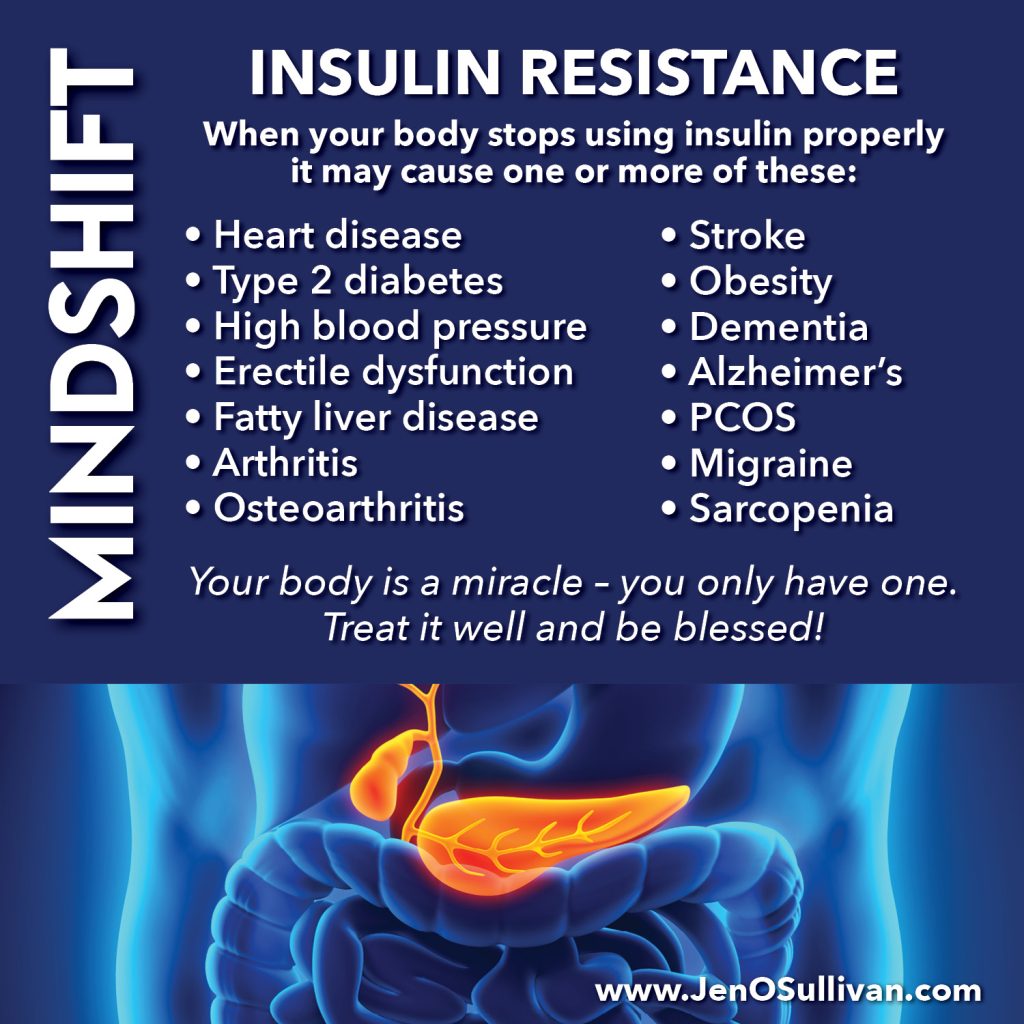
By Jen O’Sullivan
Do you have insulin resistance?
Prediabetes and diabetes happens when the pancreas doesn’t make enough insulin to maintain blood glucose at normal levels. Think of it like bombarding your body with glucose and your pancreas cannot keep up. Insulin resistance occurs when cells in your body don’t respond well to insulin.
What are the symptoms of insulin resistance?
It can look a lot like diabetic ketoacidosis (life threatening) so please see your doctor if you are having any of these symptoms.
- Increased thirst
- Frequent urination
- Increased hunger (or no appetite at all)
- Headaches
- Blurred vision
- Vaginal and skin infections
- Cuts and sores that heal slowly
Insulin resistance can lead to the following:
- Heart disease
- Type 2 diabetes
- High blood pressure
- Erectile dysfunction
- Fatty liver disease
- Arthritis
- Osteoarthritis
- Stroke
- Obesity
- Dementia
- Alzheimer’s
- PCOS
- Migraine
- Sarcopenia
How do you reverse insulin resistance?
- Work to reduce visceral fat.
- Focus on eating quality protein and veggies only.
- Limit or remove all processed foods.
- Limit or remove all grains.
- Stop eating all sugar (added).
- Keep all natural sugars (not added) to 6-11 grams per meal.
- For women keep natural sugar to 6 or less grams per meal.
- For men keep natural sugar to 11 or less grams per meal.
- Consume more fiber and veggies.
- Limit all fruit to only berries (one serving per day).
- Drink half your body weight in ounces of water each day.
- Take only a whole-food plant based multivitamin supplement.
- Take a good plant based B complex, digestive enzymes, and probiotic.
- Use a quality electrolyte stick pack (should have no added sugar or colors and should not have synthetic flavors).

